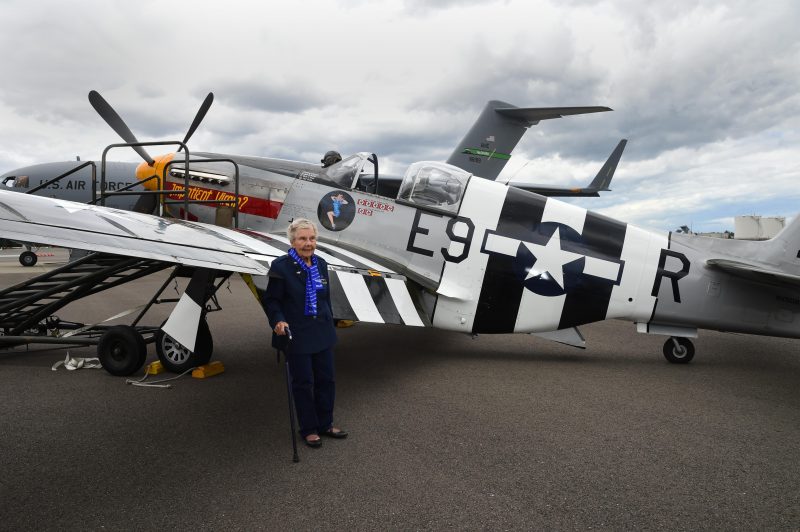How wonderful to be 100 years old and to once more be reunited with your love, even if – as in this case – it is an aircraft!
Dorothy Olsen was visiting the Joint Base Lewis-McChord, where she was delighted to ‘meet up with’ a fully restored P-51 Mustang – “Such a beautiful plane,” she said – which brought back many memories of her wartime service. It had been her duty as a WASP, during WWII, to ferry a variety of different military aircraft, one of which was the P-51 Mustang. The Mustangs had to be collected from Long Beach where they were built and flown right across the country to the delivery base at Newark. From there the aircraft would be shipped to bases in Europe.
During 1942, the United States Government was becoming most concerned about what was becoming an extreme shortage of pilots, so a rather controversial programme was instituted – that of training women to fly military aircraft. This would free up the male pilots for combat duty in Europe and the Pacific. The call was made for women who were already pilots and resulted in over 1000 young volunteers being selected. This group of female pilots was called the Women Airforce Service Pilots and they became known as WASPs.
In keeping with the times, there was some doubt as to whether the women would be up to the job, but, of course, they showed themselves more than capable. The WASPs ferried planes long distances from the factories where they were built, to the military bases where they were required, as well as to various departure points across the country, from where they were shipped or flown to overseas bases. The WASPs were involved in training, they tested newly overhauled planes, they were involved in training programmes and even used to tow targets for training the ground and air gunner crews for shooting – with live ammunition.
Many WASPs expected, since they were serving their country in this capacity, to officially be part of the military. However, due to the circumstance of the war nearing its end, together with a lot of pressure concerning their taking up male positions, the programme was cancelled after only two years. Towards the middle of 1944, flight training programs were closing down, male civilian instructors were in need of jobs, as too were those men returning from the war front. The sexism of the political and cultural climate in the military at the time was summed up in the words of K. Landdeck, history professor at Texas Women’s University. “It was unacceptable to have women replacing men,” states Landdeck. “They [the women] could release men for duty — that was patriotic — but they couldn’t replace men,”
The WASPs neither received government recognition for their service nor did they receive any veteran’s benefits following the war. Much of the information regarding them was kept secret – as were all war records – so it was only during the 1970s that the public, the lawmakers, and the military became aware of their tremendous service to the US Government during those war years. In 2010 President Obama signed a bill awarding the country’s highest civilian honour, the Congressional Gold Medal, to the women pilots of the Women’s Airforce Pilot Service.
Dorothy Owen, at 100 years of age is one of the few of those female WWII pilots still living today. To those who are no longer with us, this award may well have meant a great deal, but Dorothy, while she is proud to have received the recognition, insists that she thoroughly enjoyed her wartime flying. She so enjoyed being treated, she felt, as a princess, by the male pilots who were astonished to find a female in the cockpit. Most of all, however, Dorothy tells us, that she was proud to be able to serve her country.
